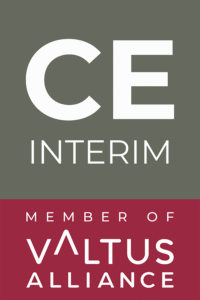Nicht genug Zeit, um den ganzen Artikel zu lesen? Hören Sie sich die Zusammenfassung in 2 Minuten an.
Cybersicherheitsstandards spielen im digitalen Zeitalter eine entscheidende Rolle, zumal Organisationen und Regierungen auf der ganzen Welt mit wachsenden Cyberbedrohungen konfrontiert sind. Die Ansätze der USA, Europas und des Nahen Ostens zum Umgang mit der Cybersicherheit zeigen regionale Unterschiede bei der Einhaltung von Vorschriften, Regulierungsmodellen und Investitionsniveaus auf.
Dieser Artikel befasst sich eingehend mit den Cybersicherheitsstandards dieser Regionen und untersucht deren Rahmen, wichtige Vorschriften und sich entwickelnde Strategien.
Das Verständnis dieser Unterschiede kann Unternehmen dabei helfen, grenzüberschreitende Compliance-Anforderungen zu erfüllen und ihre Cybersicherheitslage zu verbessern.
Cybersicherheitsstandards in den USA
Die Vereinigten Staaten verfolgen einen vielschichtigen Ansatz für die Cybersicherheit, der freiwillige Rahmenwerke, branchenspezifische Standards und neu entstehende Bundesstrategien miteinander verbindet.
Auch wenn sie nicht immer verpflichtend sind, bieten die US-Rahmenwerke für Cybersicherheit Anleitungen und Ressourcen, die von der Industrie und von Regierungsbehörden zum Schutz kritischer Infrastrukturen und sensibler Daten genutzt werden können.
1) Grundlegende Rahmenwerke und Vorschriften
A) NIST (Nationales Institut für Normung und Technologie)
Das NIST Cybersecurity Framework ist einer der am weitesten verbreiteten freiwilligen Standards in den USA. Es wurde 2014 entwickelt, um Unternehmen beim Management von Cyberrisiken zu unterstützen, und bietet eine umfassende Reihe von Best Practices.
Das NIST-Modell "Identifizieren, Schützen, Erkennen, Reagieren und Wiederherstellen" ist besonders nützlich für Organisationen aller Größen und Branchen. Im Gegensatz zu vielen europäischen Normen ist das NIST-Modell nicht rechtsverbindlich, aber es wurde von der Industrie in großem Umfang übernommen, insbesondere in Bereichen wie dem Finanzwesen, dem Gesundheitswesen und der Fertigung.
B) Bundesgesetz über das Management der Informationssicherheit (FISMA)
FISMA schreibt vor, dass Bundesbehörden ihre Informationssysteme nach einer Reihe von Standards sichern, um Cyberrisiken zu verringern. Sie legt die Mindestanforderungen für die Cybersicherheitspraktiken der Behörden fest und betont die kontinuierliche Überwachung und das Risikomanagement.
Die Einhaltung von FISMA ist für Bundesbehörden und Auftragnehmer, die mit Regierungsdaten umgehen, obligatorisch und damit ein Eckpfeiler der Cybersicherheit auf Bundesebene.
C) Gesetzgebung auf Staatsebene
Während Bundesstandards viele Aspekte der Cybersicherheit regeln, haben einzelne Bundesstaaten damit begonnen, ihre eigenen Vorschriften umzusetzen. Der California Consumer Privacy Act (CCPA) und der New York SHIELD Act beispielsweise stellen strenge Anforderungen an den Datenschutz.
Diese einzelstaatlichen Gesetze schaffen eine komplexere Regulierungslandschaft für Organisationen, die in mehreren Staaten tätig sind.
2) Wesentliche Compliance-Standards
Konformitätsstandards wie z.B. SOC 2 und HITRUST beeinflussen auch die Cybersicherheitspraktiken in den USA, insbesondere im Finanz- und Gesundheitswesen. Die vom American Institute of Certified Public Accountants (AICPA) entwickelten SOC-2-Prüfungen (System- und Organisationskontrollen) sind ein beliebtes Mittel zur Bewertung von Datenverarbeitungs- und Cybersicherheitsverfahren.
HITRUST bietet ein umfassendes Rahmenwerk, das die Anforderungen von HIPAA, ISO und NIST vereint und sich damit ideal für Organisationen im Gesundheitswesen eignet.
3) Jüngste Trends und Entwicklungen
Die Nationale Cybersicherheitsstrategie 2023 hat wichtige Änderungen eingeführt, die sich auf eine Zero-Trust-Architektur, die Sicherheit der Lieferkette und einen proaktiveren Ansatz für die Cyberabwehr konzentrieren. Die Bundesregierung hat sich verstärkt auf öffentlich-private Partnerschaften konzentriert und arbeitet mit privaten Unternehmen zusammen, um die nationale Cybersicherheit zu stärken und kritische Infrastrukturen vor Cyberbedrohungen zu schützen.
Diese Strategie stellt eine Verlagerung hin zu Präventivmaßnahmen und sektorübergreifender Zusammenarbeit dar, die angesichts der immer ausgefeilteren Cyber-Bedrohungen immer wichtiger werden.
Cybersicherheitsstandards in Europa
Europas Ansatz zur Cybersicherheit legt den Schwerpunkt auf regulatorische Aufsicht und strikte Einhaltung der Vorschriften. Mit Rahmenwerken, die die Einhaltung bestimmter Standards vorschreiben, ist Europa führend mit einem staatlich gesteuerten Ansatz, insbesondere beim Datenschutz und beim Schutz kritischer Infrastrukturen.
1) Primäre regulatorische Rahmenwerke
A) GDPR (Allgemeine Datenschutzverordnung)
Die GDPR ist weithin bekannt für ihre strengen Datenschutzanforderungen, die sich nicht nur auf europäische Unternehmen auswirken, sondern auf alle Organisationen, die mit Daten von EU-Bürgern umgehen. Die GDPR schreibt strenge Richtlinien für die Erhebung, Verarbeitung und Speicherung von Daten vor und sieht bei Nichteinhaltung erhebliche Geldstrafen vor.
Diese Verordnung hat weltweit einen hohen Standard für den Datenschutz gesetzt und hat ähnliche Gesetze in anderen Regionen beeinflusst.
B) NIS-Richtlinie (Richtlinie über die Sicherheit von Netz- und Informationssystemen)
Die 2018 verabschiedete NIS-Richtlinie war die erste Richtlinie der EU, die sich ausschließlich auf die Cybersicherheit konzentrierte. Sie verpflichtet Betreiber wesentlicher Dienste (z. B. Gesundheitswesen, Energie) und Anbieter digitaler Dienste zur Umsetzung angemessener Sicherheitsmaßnahmen und zur Meldung wesentlicher Vorfälle.
Die Richtlinie war von entscheidender Bedeutung für die Durchsetzung eines grundlegenden Niveaus der Cybersicherheit in allen wichtigen Sektoren.
C) Cybersicherheitsgesetz
Mit dem Cybersicherheitsgesetz wurde ein Rahmen für die Zertifizierung von IKT-Produkten, -Dienstleistungen und -Prozessen in der gesamten EU eingeführt, der Vertrauen schaffen und den digitalen Markt sichern soll. Die Zertifizierung im Rahmen dieses Rechtsakts ist freiwillig, gewinnt aber zunehmend an Bedeutung, da die Unternehmen versuchen, die Einhaltung der Vorschriften und ihre Zuverlässigkeit nachzuweisen.
2) Zertifizierungsanforderungen und -standards
Europa erkennt internationale Normen an wie ISO/IEC 27001die eine weltweit anerkannte Norm für Informationssicherheitsmanagementsysteme (ISMS) ist.
Außerdem ist die Agentur der Europäischen Union für Cybersicherheit (ENISA) spielt eine entscheidende Rolle bei der Unterstützung der Cybersicherheitsbemühungen in der gesamten EU, indem es Leitlinien bereitstellt und die Reaktionen auf grenzüberschreitende Vorfälle koordiniert.
3) Jüngste Entwicklungen
Die EU arbeitet aktiv an der Schaffung gemeinsamer Zertifizierungsrahmen für IKT-Produkte, um die Sicherheit in den Mitgliedstaaten zu erhöhen. Mit Initiativen wie eIDAS (Elektronische Identifizierung, Authentifizierung und Vertrauensdienste) leistet die EU Pionierarbeit für standardisierte elektronische ID-Systeme, die es den Bürgern ermöglichen, ihre elektronischen Ausweise grenzüberschreitend innerhalb der EU zu verwenden.
Mit den jüngsten Änderungen der NIS-Richtlinie (NIS2) werden die Sicherheitsanforderungen weiter erhöht, wobei der Schwerpunkt auf der Widerstandsfähigkeit kritischer Infrastrukturen und der Verbesserung der Meldeverfahren für Zwischenfälle liegt.
Cybersicherheitsstandards im Nahen Osten
Der Nahe Osten ist zwar noch nicht so weit, wenn es um formalisierte Cybersicherheitsrahmen geht, aber er entwickelt seine Cybersicherheitsfähigkeiten rasch weiter. Viele Länder in dieser Region übernehmen Elemente aus US-amerikanischen und europäischen Standards, wobei der Schwerpunkt auf dem Schutz kritischer Infrastrukturen wie Energie und Finanzen liegt.
1) Regionaler Fokus und aufkommende Standards
Die Länder des Nahen Ostens, allen voran Saudi-Arabien, die Vereinigten Arabischen Emirate und Katar, sind dabei, proaktiv Rahmenbedingungen für die Cybersicherheit zu schaffen.
Im Zuge der Modernisierung ist die Region mit einzigartigen Cyber-Bedrohungen konfrontiert, insbesondere aufgrund ihrer Konzentration auf den Energie- und Finanzsektor, was eine robuste Cybersicherheit unerlässlich macht.
2) Länderspezifische Standards
A) Saudi-Arabien:
Die Nationale Behörde für Cybersicherheit (NCA) hat einen Rahmen geschaffen, der die Einhaltung bestimmter Cybersicherheitsstandards vorschreibt, insbesondere für kritische Infrastrukturen.
Dieser Rahmen orientiert sich an internationalen Standards, unterstützt staatliche Initiativen im Bereich der Cybersicherheit und fördert die Einhaltung der Vorschriften durch den Privatsektor.
B) VAE:
Die VAE Standards für die Informationssicherheit (IAS) Leitlinien für den Schutz nationaler Datenbestände und kritischer Infrastrukturen zu erstellen.
Darüber hinaus haben die VAE Richtlinien zur Datenlokalisierung durchgesetzt, um sicherzustellen, dass sensible Daten innerhalb der Landesgrenzen verbleiben, was dazu beiträgt, die mit der Datensouveränität verbundenen Risiken zu mindern.
C) Katar:
Katar's Nationale Cybersicherheitsstrategie konzentriert sich auf kritische Sektoren und zielt darauf ab, eine widerstandsfähige Cybersicherheitsinfrastruktur aufzubauen.
Angesichts hochkarätiger Veranstaltungen wie der FIFA Fußball-Weltmeisterschaft in Katar sind Maßnahmen zur Cybersicherheit eine nationale Priorität, die internationale Partnerschaften zur Stärkung der Sicherheitsstandards nach sich zieht.
3) Investitionen in die Cybersicherheit und Bedrohungslandschaft
Als Reaktion auf die zunehmenden Cybervorfälle investieren die Länder des Nahen Ostens stark in die Cybersicherheit. Kaspersky berichtet zum Beispiel, dass Malware und Ransomware in dieser Region weit verbreitet sind und die Angriffe stetig zunehmen.
Die Haushaltsmittel für die Cybersicherheit sind erheblich gestiegen, und die Länder investieren in fortschrittliche Lösungen und fördern regionale Partnerschaften, um den Austausch von Bedrohungsdaten zu verbessern.
Wichtige Unterschiede und Gemeinsamkeiten zwischen den Regionen
1) Gesetzliche vs. freiwillige Standards
Ein großer Unterschied besteht darin, dass europäische Cybersicherheitsstandards wie die GDPR und die NIS-Richtlinie die Einhaltung erzwingen, während in den USA Standards wie NIST freiwillig sind.
Im Nahen Osten gibt es eine Mischung aus verbindlichen Normen für bestimmte Sektoren, die sowohl von den USA als auch von Europa beeinflusst sind.
2) Zertifizierungs- und Konformitätsmodelle
Der europäische Schwerpunkt auf Zertifizierungen im Rahmen des Cybersicherheitsgesetzes unterscheidet sich von dem in den USA, wo branchenbezogene Zertifizierungen wie SOC 2 und HITRUST üblicher sind.
Die Länder des Nahen Ostens entwickeln Zertifizierungen, die von beiden Regionen beeinflusst sind, wobei sie ein Gleichgewicht zwischen internationaler Einhaltung und regionalen Anforderungen herstellen.
3) Öffentlich-private Partnerschaften
Während die USA und Europa aktiv mit privaten Einrichtungen zusammenarbeiten (z. B. CISA in den USA und ENISA in Europa), verfolgt der Nahe Osten traditionell einen von der Regierung geführten Ansatz.
Angesichts der zunehmenden Cyber-Bedrohungen werden öffentlich-private Partnerschaften in dieser Region jedoch immer häufiger.
4) Datenlokalisierung und Datenschutzgesetze
Die Datenschutzgesetze sind in Europa (GDPR) strenger als in den USA, wo die Gesetzgebung zum Datenschutz eher fragmentiert ist.
Im Nahen Osten, insbesondere in den Vereinigten Arabischen Emiraten, wurden Maßnahmen zur Datenlokalisierung ergriffen, um sensible Informationen zu schützen, insbesondere in Bereichen, die für die nationale Sicherheit von Bedeutung sind.
Aufkommende Trends und zukünftige Richtungen in der Cybersicherheit
1) USA
Die USA fördern die Null-Vertrauens-Architektur als zentrale Verteidigungsstrategie, erhöhen die Widerstandsfähigkeit und konzentrieren sich auf die Sicherheit der Lieferkette. Dieser proaktive Ansatz stellt eine bedeutende Entwicklung in der amerikanischen Cybersicherheitspolitik dar.
2) Europa
Europa legt den Schwerpunkt auf harmonisierte Sicherheitsstandards, insbesondere für grenzüberschreitende digitale Dienstleistungen und elektronische Ausweise (eIDAS). Die EU prüft auch Maßnahmen zur Cybersicherheit im Zusammenhang mit künstlicher Intelligenz und erkennt die neuen Risiken, die von den neuen Technologien ausgehen.
3) Naher Osten
Der Nahe Osten erhöht stetig seine Investitionen in die Cybersicherheit und verbessert die Widerstandsfähigkeit seiner Infrastruktur. Da die Bedrohungen immer häufiger und raffinierter werden, arbeitet die Region mit weltweit führenden Unternehmen im Bereich der Cybersicherheit zusammen, um bewährte Verfahren zu übernehmen und den Austausch von Bedrohungsdaten zu verbessern.
Wie die Interim-CISO- und CIO-Dienste von CE Interim die Cybersicherheit erhöhen
Für Unternehmen in den USA, Europa und dem Nahen Osten, CE Interim's erfahrene Interim-CISO und CIO Experten bieten entscheidende Führungsqualitäten im Bereich Cybersicherheit. Diese Interim-Manager bringen kulturübergreifendes Fachwissen mit, um regionalspezifische Vorschriften wie die GDPR in Europa oder die NCA in Saudi-Arabien zu berücksichtigen und so die Einhaltung und Risikominderung zu gewährleisten.
Die sofort verfügbaren Führungskräfte von CE Interim zeichnen sich durch ein hervorragendes Krisenmanagement und eine schnelle Reaktion auf Sicherheitsvorfälle aus und helfen Unternehmen bei der Stabilisierung ihres Betriebs. Ihr Ansatz verbessert nicht nur die unmittelbare Widerstandsfähigkeit, sondern überträgt auch wichtige Fähigkeiten auf interne Teams, was langfristige Vorteile für die Cybersicherheit gewährleistet.
Schlussfolgerung
Die USA, Europa und der Nahe Osten gehen an die Cybersicherheit mit jeweils eigenen Prioritäten und Standards heran, die durch das regulatorische Umfeld, wirtschaftliche Faktoren und regionale Bedrohungen beeinflusst werden.
Da die Cyber-Risiken weiter zunehmen, kann das Verständnis dieser Unterschiede Unternehmen dabei helfen, internationale Standards einzuhalten und ihre Cybersicherheitsstrategien zu stärken.





